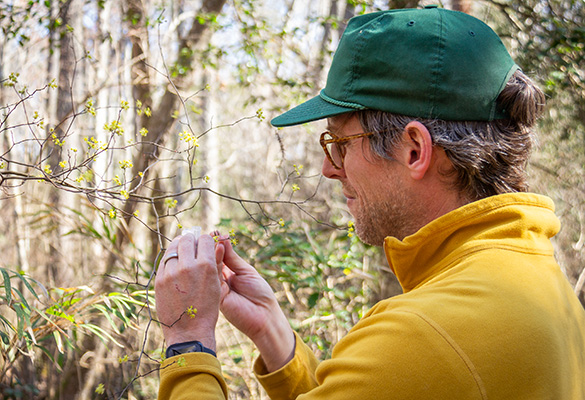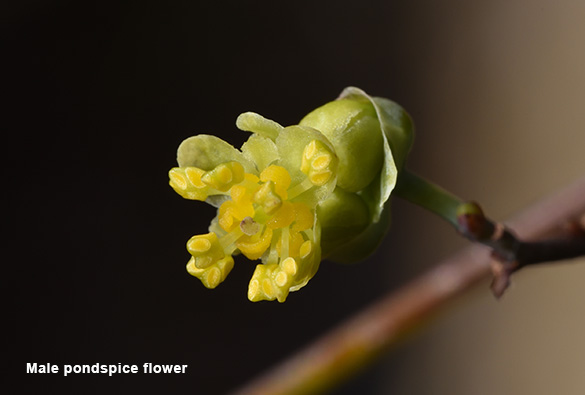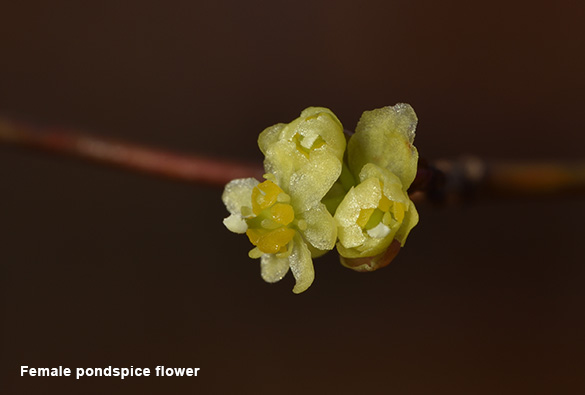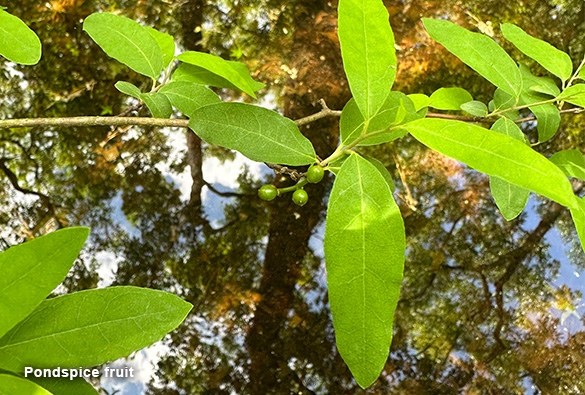
 Department of Conservation and Recreation
Department of Conservation and Recreation
Conserve. Protect. Enjoy.
 Department of Conservation and Recreation
Department of Conservation and Recreation
By Emi EndoPosted July 09, 2024

Documented periodically in Virginia since the 1730s, pondspice (Litsea aestivalis), a globally rare shrub with clusters of tiny yellow flowers, stayed hidden from view for 155 years. It was presumed to be lost until its rediscovery in York County in 1995.
Today, there are three known locations of the species in the state. Pondspice is dioecious, which means each plant produces either male or female flowers, not both.



At Grafton Ponds Natural Area Preserve in York County, following the death of one male plant in the late 1990s, only two individual plants remain – both female.
About 50 miles away at Antioch Pines Natural Area Preserve in Isle of Wight County, another population of pondspice includes at least four males.
To prevent pondspice from disappearing for good, staff at the Virginia Natural Heritage program took matters into their own hands.
“Not doing anything is like making a decision that we will let it go extinct,” said Zach Bradford, steward for the Chesapeake Bay Region. “We decided to move some pollen.”
In March, Bradford harvested pollen from male flowers at Antioch Pines, then drove to Grafton Ponds and dabbed pollen onto hundreds of female flowers.
The experiment worked. So far, there are several fruit maturing.
“When I saw the developing fruit for the first time, I was excited that our pollen-moving technique actually worked and, more importantly, that there is still hope for the survival of this tiny population,” Bradford said.
Through a partnership with the North Carolina Botanical Garden, the fruit will be grown into seedlings (about half of which should be male) to be planted back at Grafton Ponds and eventually restore natural pollination and fruit production there.
Categories
Conservation | Natural Heritage | Nature

